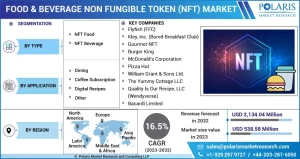What Jamie Dimon gets right about blockchain amid the cold of crypto winter
Illustration: Aïda Amer/Axios
Wall Street’s strong rally hasn’t quite transferred to digital assets, which are still languishing in the cold of an intensifying crypto winter. But market volatility obscures a quiet blockchain revolution taking place beneath the surface.
Why it’s important: Bitcoin, ether, and non-fungible tokens (NFTs) often dominate public conversations about crypto and the public’s imagination. Amidst the turbulence, however, it may be more useful to think of these instruments as an extension of the technology that powers them, with practical applications beyond digital tokens.
Driving the news: Last week, JPMorgan Chase CEO Jamie Dimon renewed his criticism of the sector, comparing tokens to “decentralized Ponzis.” With all of crypto’s growing legal and financial problems, it’s hard to argue his point (although some did).
- Still, the infamous crypto plague highlighted the virtues of blockchain, with the banking giant pushing Onyx, a global payments platform.
The big picture: JPMorgan isn’t the only one moving forward with blockchain development, even as the cryptocurrency’s decline deepens. The technology’s use cases are growing in other areas such as games, telecommunications and electronic commerce.
- Before the pandemic, blockchain phones were billed as the next big disruptive thing, though that early momentum appears to have stalled.
- South Korea is exploring its use in identification and authentication (which makes sense since Blockchain is effectively a digital ledger), to help boost its economy.
- And start-ups are pioneering new uses of the technology – like TessaB, which sells used phones using a digital ledger; and IoTex, a platform that connects “Internet of things (IoT)” devices to the real world.
What they say: Analysts at Bank of America, echoing Dimon, pushed back against the idea that blockchain lacks “intrinsic value,” one of the most debated ideas in crypto. BofA pointed out that Ethereum’s ledger has generated over $4 billion in transaction fees so far this year, suggesting the technology has more room to grow.
- “We are not yet able to predict cash flows, given blockchain technology is a nascent industry and cash flows remain unpredictable – but stay tuned,” the bank wrote.
- “Blockchains can generate cash flows through transaction fees from validating native token transactions or from validating transactions coming from applications running on top of the blockchain.”
Bottom line: Even as cryptoassets continue to roll, blockchain’s utility and use cases will continue to accelerate.


